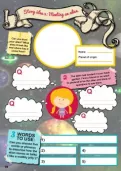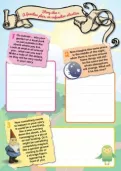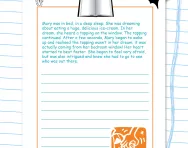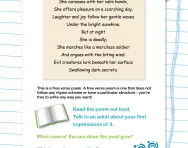Important update from TheSchoolRun
For the past 13 years, TheSchoolRun has been run by a small team of mums working from home, dedicated to providing quality educational resources to primary school parents. Unfortunately, rising supplier costs and falling revenue have made it impossible for us to continue operating, and we’ve had to make the difficult decision to close. The good news: We’ve arranged for another educational provider to take over many of our resources. These will be hosted on a new portal, where the content will be updated and expanded to support your child’s learning.
What this means for subscribers:
- Your subscription is still active, and for now, you can keep using the website as normal — just log in with your usual details to access all our articles and resources*.
- In a few months, all resources will move to the new portal. You’ll continue to have access there until your subscription ends. We’ll send you full details nearer the time.
- As a thank you for your support, we’ll also be sending you 16 primary school eBooks (worth £108.84) to download and keep.
A few changes to be aware of:
- The Learning Journey weekly email has ended, but your child’s plan will still be updated on your dashboard each Monday. Just log in to see the recommended worksheets.
- The 11+ weekly emails have now ended. We sent you all the remaining emails in the series at the end of March — please check your inbox (and spam folder) if you haven’t seen them. You can also follow the full programme here: 11+ Learning Journey.
If you have any questions, please contact us at [email protected]. Thank you for being part of our journey it’s been a privilege to support your family’s learning.
*If you need to reset your password, it will still work as usual. Please check your spam folder if the reset email doesn’t appear in your inbox.
8 ways to nurture your child's creativity

It’s a well-known fact that sharing books with our children has huge benefits in almost every area of learning – not to mention in cultivating a love of reading. But writing for pleasure often takes a back seat to reading. A recent study by the National Literacy Trust shows that only half of children enjoy writing outside school, whether it’s because they can’t think of what to write, or struggle with spelling and grammar.


Download a FREE Creative Writing toolkit!
- KS1 & KS2 workbooks
- Bursting with fill-in prompt sheets and inspiring ideas
- Story structure tips, style guides and editing suggestions
‘I firmly believe that everyone has a story to tell,’ says Gill Pawley, who runs Inkpots Writing Workshops for children and young people. ‘In a world which is increasingly busy and confusing, anything that provides our children with a creative outlet to help them express feelings and thoughts can only help. It’s also a chance to encourage a break from electronic devices.’
Writing stories doesn’t always involve putting pen to paper. ‘Some children will find it easier to write stories down than others, but there are many other ways that stories can be told,’ Gill explains. ‘Pictures, videos and photographs can all be used, for example.’
Here are Gill’s top tips for encouraging your child to unleash their creativity.
1. Start an ideas book
Encourage your child to keep a notebook of their observations. ‘When David Walliams goes into schools to talk about his writing, he encourages children to open their eyes and ears,’ says Gill. ‘Everyday situations can inspire some amazing stories, but we quickly forget what’s happened, so keeping a book of ideas is a real help.’ Holidays are a particularly good opportunity to get your child started with their ideas book, and you can support your child by keeping a notebook yourself, too.
2. Keep a creative folder
Allocate a special plastic folder to the creative work that your child does at home. ‘This should be separate from schoolwork; writing that isn’t homework should be fun and pleasurable,’ says Gill. Folders can be decorated with pens and stickers, too, to make them even more distinct from schoolwork.
3. Use nice stationery
There’s a huge range of fun and funky stationery on the market, ranging from gel pens to metallic and day-glo ink, and some lovely new pens and pencils can be a great incentive for children to write. ‘Some children like to use particular pens and pencils for their writing and drawing,’ Gill says. ‘You can keep these all together in the folder, too.’
4. Encourage imagination
Don’t be afraid to encourage your child to let their imagination go wild: when they’re writing for pleasure, their ideas can be as wacky as they want. ‘I’ve noticed that some children almost need permission to explore their ideas, but the most popular authors like Roald Dahl and David Walliams always have larger than life characters and situations,’ Gill explains. Forget realism; this is your child’s chance to bring their fantasy worlds to life.
5. Enter writing competitions
Competitions are a good way of helping your child get used to working towards a deadline without too much pressure. ‘Writing competitions are a useful tool for those who struggle to finish a story; you can often find details of these competitions on social media,’ Gill says. The incentive of winning a prize is also a great motivator.
6. Write a letter to an author
Writing to a favourite author – and maybe even getting a reply – is a brilliant idea that will inspire children with their own writing. ‘Obviously, not all authors are able to reply because of the number of letters they receive, but most children’s writers have something in place for their young fans, so that children get some kind of response,’ Gill says. ‘It’s always exciting for a child to get a letter in the post from one of their literary heroes.’
7. Bypass pencil and paper
Some children aren’t natural writers but are fantastic storytellers, so experiment with different ways for them to express themselves. ‘Quite often, it’s just a case of finding the right vehicle for their ideas,’ explains Gill. ‘For example, some children enjoy making a comic strip, particularly if they prefer drawing to writing.’ The brilliant Comics Club blog has monthly challenges for children.
8. Join a writing group
Joining a club will give your young writer or illustrator the support and encouragement of being with like-minded children. ‘Some schools run creative groups, or there may be one locally to you,’ Gill says.








